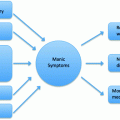Modulation therapy
General anesthesia
Cognitive side effects
Indicated when failure to respond to one antidepressant in current episode
Treatment-resistant depression
Switch to mania
Seizurogenic
ECT
Yes
Yes
–
+
Cases reported
Yes
TMS
No
No
+
±
Cases reported
No
DBS
Yes
Possible
–
+
Cases reported
No
MST
Yes
Minimal
–
+
Unavailable literature
Yes
FEAST
Yes
Minimal
–
+
Unavailable literature
Yes
tDCS
No
No
+
±
Unavailable literature
Possible
Future neuromodulation studies should include older adults with major depression and bipolar disorder. This will help to better understand the potential efficacy and safety of these treatments in older, medically complex populations with treatment-resistant depression.
Clinical Pearls
ECT
In ECT, right unilateral lead placement may minimize cognitive side effects compared to bifrontal, left anterior right temporal, or bitemporal lead placements
Older adults generally have higher medical comorbidity due to medical complexity and are, therefore, at higher risk for polypharmacy. Treatment of bipolar disorder (depression, mania, mixed episodes) with ECT may allow for a reduction in polypharmacy to achieve remission, thus lowering the risk of drug–drug interactions.
Older adults with depression complicated by catatonic and psychotic features generally have better response rates to ECT than those without psychosis or catatonia.
Older age is generally a positive predictor of ECT response.
ECT has demonstrated efficacy in treating unipolar and bipolar depression.
Acute mania, acute depression, and mixed episodes in bipolar illness can be effectively treated with ECT.
TMS
TMS requires daily sessions for at least four weeks to demonstrate antidepressant effects.
While studies are limited, available data show that rTMS improves depressive symptoms in adult-aged bipolar patients. More data are needed to support its use in older adults with bipolar disorder.
DBS
Due to the invasiveness, cost, and complexity of DBS, more studies are needed before this experimental therapy becomes a clinical option outside of very specific trials.
In Parkinson’s disease, DBS has reportedly shown the potential of inducing mania when targeting the subthalamic nucleus.
As seen in this chapter’s clinical vignette, DBS is a therapy that is reserved for patients who have failed less invasive neuromodulation treatments.
MST
MST combines elements of ECT and TMS, producing fewer cognitive side effects compared to RUL ECT.
MST allows for a focal seizure restricted to the superficial cortex.
Available literature indicates that MST is a promising option in treating bipolar depression.
tDCS
tDCS is generally inexpensive and has the potential of being administered in non-specialized clinical environments.
tDCS has demonstrated efficacy in treating bipolar depressed patients in small studies.
FEAST
FEAST initiates focal seizures in the prefrontal cortex with subsequent generalization and may be a neuromodulation therapy that produces fewer cognitive side effects compared to ECT.
FEAST has shown significant antidepressant effects in both unipolar and bipolar depressed patients with no current data on treatment-emergent mania.
Ketamine Infusion
Ketamine is an NMDA receptor antagonist, with significant transient antidepressant effects when administered intranasal or intravenously.
Ketamine can prolong seizure time in ECT when used as an anesthetic agent, with potential independent antidepressant effects and theoretically less cognitive adverse effects. Large double-blind randomized clinical trials are needed to investigate these findings further.
Ketamine has been found to possess rapid antisuicidal effects within 60 min in patients with bipolar depression.
References
1.
Hoyle S, Elliott L, Comer L. Available screening tools for adults suffering from bipolar affective disorder in primary care: an integrative literature review. J Am Assoc Nurse Pract. 2015;27(5):280–9.PubMed
2.
Forester BP, Ajilore O, Spino C, Lehmann SW. Clinical characteristics of patients with late life bipolar disorder in the community: data from the NNDC registry. Am J Geriatr Psychiatry. 2015;23(9):977–84.CrossRefPubMedPubMedCentral
3.
Peterchev AV, Rosa MA, Deng ZD, Prudic J, Lisanby SH. Electroconvulsive therapy stimulus parameters: rethinking dosage. J ECT. 2010;26(3):159–74.CrossRefPubMedPubMedCentral
4.
5.
Tew JD Jr, Mulsant BH, Haskett RF, Prudic J, Thase ME, Crowe RR, et al. Acute efficacy of ECT in the treatment of major depression in the old-old. Am J Psychiatry. 1999;156(12):1865–70.PubMed
6.
O’Connor MK, Knapp R, Husain M, Rummans TA, Petrides G, Smith G, et al. The influence of age on the response of major depression to electroconvulsive therapy: a CORE Report. Am J Geriatr Psychiatry Fall. 2001;9(4):382–90.CrossRef
7.
Kerner N, Prudic J. Current electroconvulsive therapy practice and research in the geriatric population. Neuropsychiatry (London). 2014;4(1):33–54.CrossRef
8.
9.
10.
11.
12.
American Psychiatric Association Group. The practice of electroconvulsive therapy: recommendations for treatment, training, and privileging. A Task Force Report of the American Psychiatric Association. 2nd ed. Washington, DC: APA; 2001.
13.
Scott A. College guidelines on electroconvulsive therapy: an update for prescribers. 2005;11:150–6.
14.
Royal College of Psychiatrists. The ECT Handbook. 2005. (The Third Report of the Royal College of Psychiatrists’ Special Committee on ECT (Council Report CR128)).
15.
16.
Rubner P, Koppi S, Conca A. Frequency of and rationales for the combined use of electroconvulsive therapy and antiepileptic drugs in Austria and the literature. World J Biol Psychiatry. 2009;10(4 Pt 3):836–45.CrossRefPubMed
Stay updated, free articles. Join our Telegram channel

Full access? Get Clinical Tree





